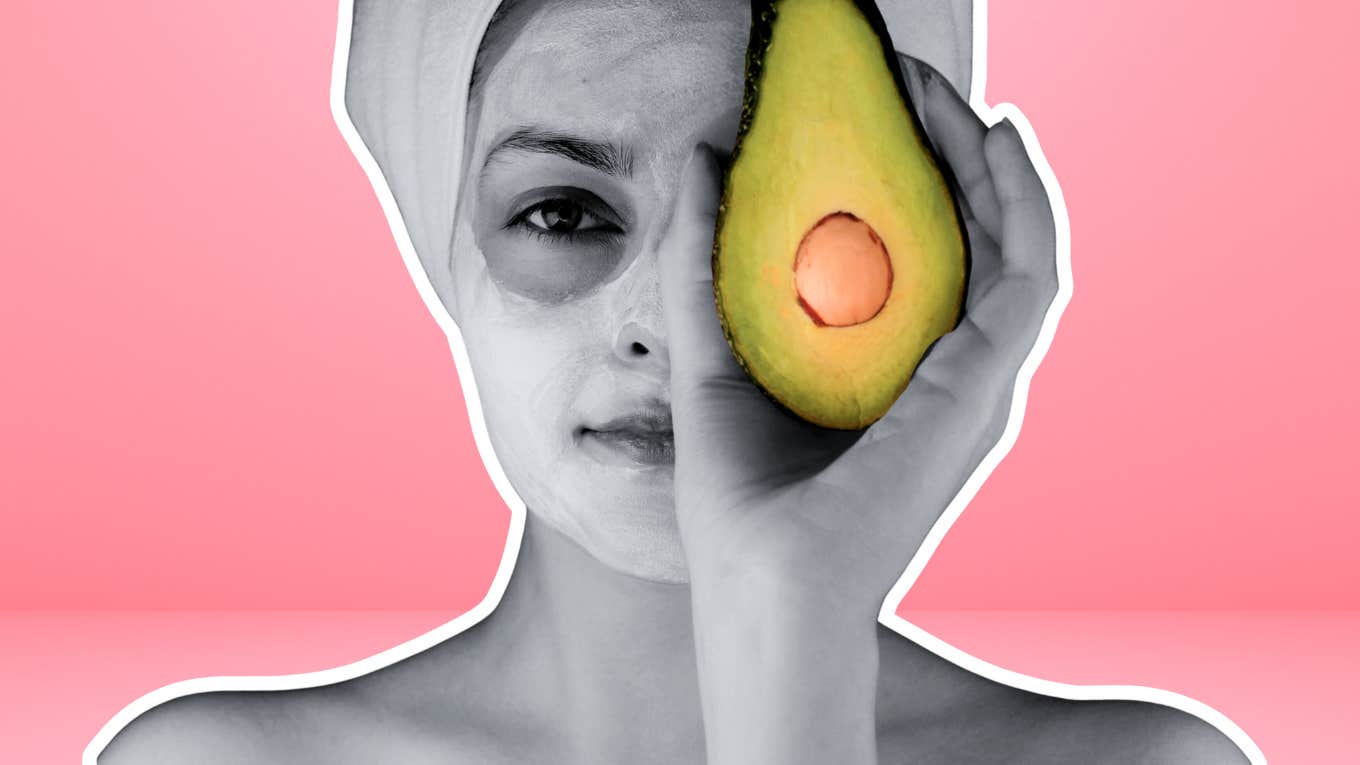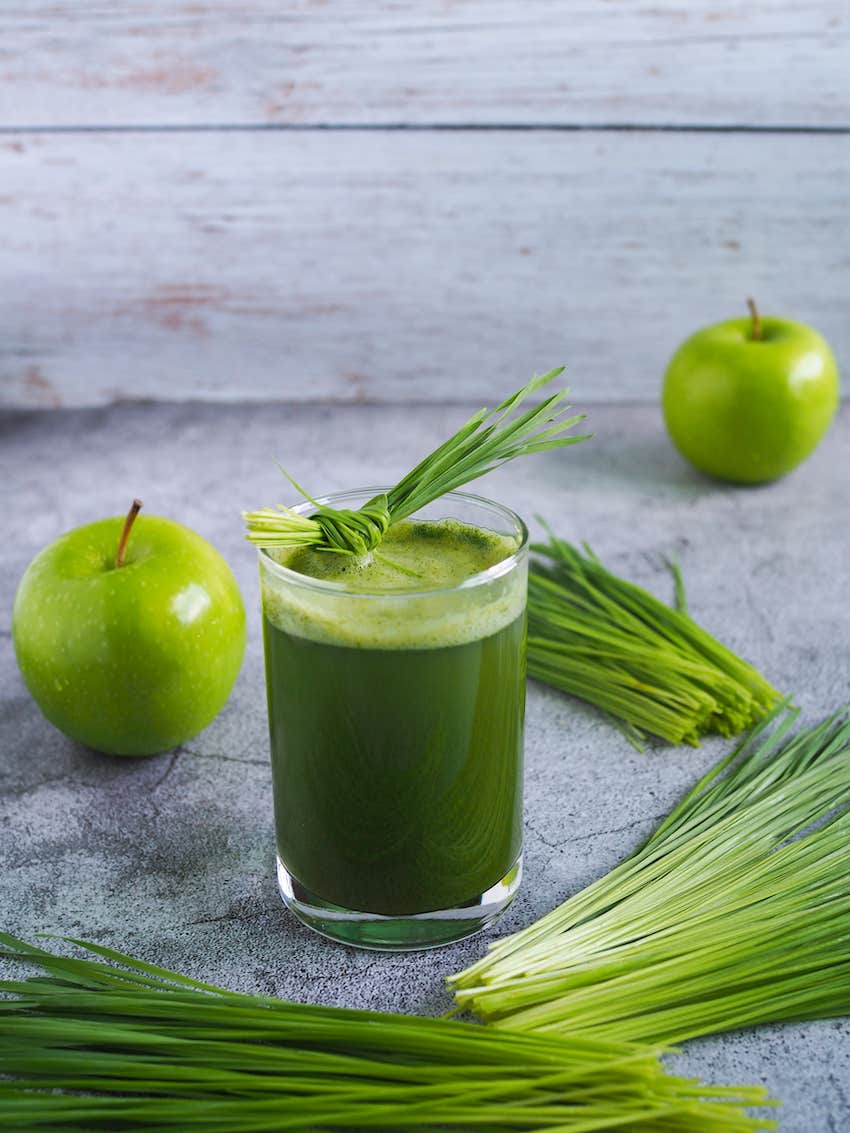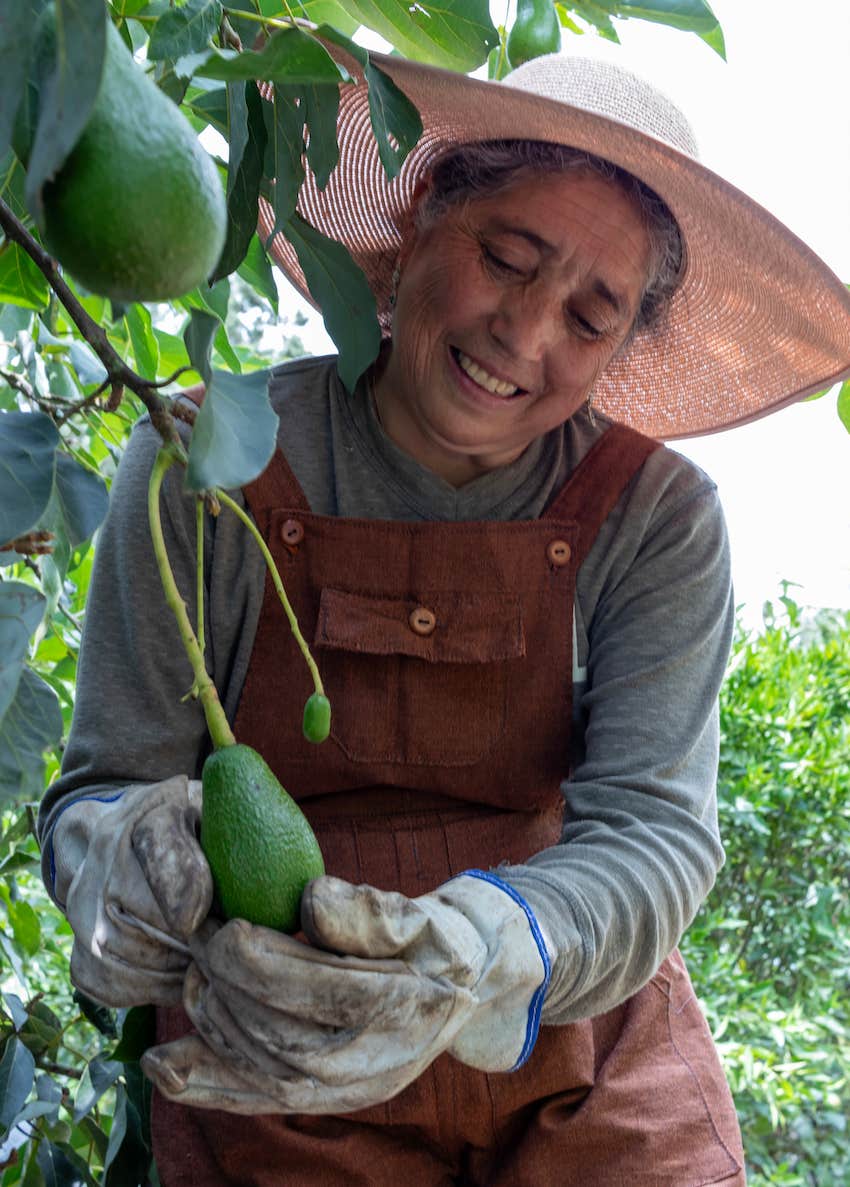8 Healthy Foods That Give You That Glow From Within, No Spa Required
A nutritionist shares delicious anti-aging foods that will help you feel as good as you look.
 Kimia Zarifi | Unsplash
Kimia Zarifi | Unsplash Our skin reflects our health and is the first impression people have of us when we meet, it’s no surprise many of us want to have the best skin possible. That's why I've researched natural anti-aging options to make my skin look younger, including what foods are good for skin health.
Eight anti-aging foods that help you get that spa-fresh glow from within
1. Omega-3s
Foods containing omega-3 fatty acids can help with more youthful-looking skin because they contain crucial nutrients needed to help repair damaged skin cells. They also contain anti-inflammatory properties that may lead to smoother, younger-looking skin and reduce inflammatory skin conditions, like acne or psoriasis.
Some of the top sources of omega-3 are cold-pressed, organic hemp or flax seed oil, hemp seeds, flax seeds, chia seeds, walnuts, and certain fish like sardines, salmon, mackerel, tuna, anchovies, and black cod.
2. Vitamin-rich foods
Foods rich in vitamins A, C, and E will provide the antioxidants that can help protect the cells from free radicals that can damage skin and cause wrinkles.
Organic, fresh, and unprocessed food will provide the most nutrition. Always consume fruits in their whole form with the fiber, and never drink pure or processed fruit juice. (Fruit juice goes straight into the bloodstream too quickly, and it’s much better to have the fiber of the whole fruit to slow down the sugar.)
Vitamin A-rich foods are apricots, Goji berries, Acai berries, butternut squash, carrots, cantaloupe, leafy greens (especially kale, Swiss Chard, and romaine, as well as sprouts and wheatgrass), mangos, pumpkin, sweet potato, spinach, and tomatoes.
Vitamin C-rich foods are apricots, Goji berries, blueberries, strawberries, bilberries, cranberries, raspberries, grapes, oranges, grapefruits, papayas, strawberries, kiwis, (red, yellow and orange) bell peppers, cantaloupes, tomatoes, broccoli, mangoes, Brussel sprouts, cauliflower, leafy greens (including kale), sprouts, and wheat grass.
Vitamin E-rich foods are avocado, sprouted nuts (ex. almond, Brazil, pine, hazelnuts), sprouted seeds (like sunflower seeds), olives, raw red sweet pepper, turnip greens, spinach, asparagus, mango, kiwi, wheat germ, wheat grass. (Sprouted seeds and nuts make them easier to digest and more nutrient-dense. I explain more about this in my nutrition/cookbooks).
3. Wheatgrass
Wheatgrass has many benefits taken internally or used topically. Wheatgrass is the young grass shoot of the common wheat plant, which is frequently taken as a juice. It can be consumed in a capsule or tablet form as well. You may want to ease into taking wheatgrass because it is such a powerful food.
Wheatgrass juice is a great detoxifier and, if it’s consumed too much too quickly or with a meal, it may make you feel nauseous or give you a headache. So, start slow and add a little more to your diet as you can.
I recommend starting with one ounce a day and slowly adding a bit more to the diet as you get used to it. Take wheatgrass on an empty stomach or in addition to fresh fruits and vegetables. I take my first thing in the morning with a dash of Ceylon cinnamon and a pinch of Bolivian sea salt. I think it makes it taste better and also adds some health benefits.
 Sarocha Wangdee via Shutterstock
Sarocha Wangdee via Shutterstock
You can also use wheatgrass in your non-chlorinated bath water, or put it on your skin topically as a wash in its pure form. It’s been shown to help detoxify the cells, oxygenate the blood, and have antiviral effects. In addition to this, wheatgrass has been found to help lower the risk of various cancers.
Wheatgrass juice is an excellent source of concentrated chlorophyll (rich in antioxidants), vitamins A, C, and E, and contains about 98 of 102 of the earth elements found in soil (which include phosphorus, calcium, magnesium, selenium, iron, and potassium), electrolytes, 19 amino acids, and powerful enzymes.
Wheatgrass juice is a powerhouse of nutrition!
4. Tomatoes
Not only are tomatoes high in vitamin A, but they are also high in lycopene, which can act as natural sun protection and help prevent sun damage to the skin. In a study, “Volunteers who consumed five tablespoons of high-in-lycopene tomato paste daily for three months had nearly 25 percent more protection against sunburn. Even better, the skin had more collagen, which prevents sagging. German scientists report that higher skin levels of this antioxidant correlate to fewer fine lines and furrows.”
5. Walnuts
Walnuts are high in omega-3 fatty acids, protein, as well as alpha-linolenic acid. The alpha-linolenic acid helps keep the skin moist and supple. Walnuts also have been found to help with sleep. Getting enough sleep is great for healthy skin. Our body rests and heals when it is truly resting at night in a deep sleep. Researchers at the University of Texas Health Science Center discovered that walnuts contain melatonin, a hormone that regulates sleep.
6. Cacao
Yes, you can eat dark chocolate for your skin’s health! Cacao is one of the highest antioxidant and flavonoid-containing foods. It is wonderful at improving circulation. a great source of flavonols — a group of plant metabolites that have excellent antioxidant effects. These flavonols can fight against skin damage. Flavonoids also fight free radicals (molecules that have lost an electron and attack DNA, enzymes, and proteins or cell membranes) in the bloodstream.
Women who drank 1/2 cup of dark cacao cocoa every day for twelve weeks in a study had significantly softer, smoother, and better-hydrated skin. The British study had the volunteers consume an 8-ounce cup of cocoa and found that they had improved blood flow to the brain for 2 hours. Besides better functioning on complex tasks, participants showed more brain activity in MRI scans — an indication of enhanced brain function that may reduce the risk of dementia.
7. Avocado
The avocado is a super powerhouse food! This fruit is packed with nutritional benefits and has a delicious creamy rich flavor. What could be better? Avocados contain monounsaturated fat, which is a “good fat.” According to the Harvard School of Public Health, “Unsaturated fats are called good fats because they can improve blood cholesterol levels, ease inflammation, stabilize heart rhythms, and play several other beneficial roles.”
The healthy fat, like the fat in avocados, is essential for every cell in our body. It can support our brain, boost our immune system, increase our nutrient absorption, and best of all, it can create a glowing complexion.
 Lenin Suntaxi via Shutterstock
Lenin Suntaxi via Shutterstock
8. Coconut
Coconut (meat, water, and oil) can be used in many ways as food, lotion, and beverage. Talk about healthy food! Coconut oil is one of my favorites.
Coconut oil contains a high amount of saturated fats but different from saturated fats from meat. The saturated fat of coconut oil contains medium-chain triglycerides.
These medium-chain fatty acids are absorbed differently by the body. These fatty acids go straight to the liver from the digestive tract and are then turned into ketone bodies. These ketones have a therapeutic effect on the brain by allowing the brain to absorb glucose from the bloodstream. Coconut oil has been studied for its positive effect on brain disorders like epilepsy and Alzheimer’s.
Coconut water also has cytokines, kinetin, and trans-zeatin, which have antithrombotic, anti-carcinogenic, and anti-aging effects on the body. Coconut water is delicious and can be a good alternative to drinking regular water.
I cook with coconut oil, add it to my recipes, and use it as a body lotion. Topically, coconut oil is great for contributing to having radiant skin. Coconut oil also can penetrate your skin on a deeper level than your average skin product. If you have a problem with dry skin, using coconut oil as your body lotion is an effective remedy. Coconut oil is very stable and will be either hard or more liquid depending on the temperature. If it’s hard, rub the coconut oil in your hands to warm it up, then just smooth over your body and any dry, rough areas.
I consider food to be my medicine. Since it becomes our cells, tissue, and blood, it is only logical to eat the best foods for our skin and overall health and well-being. That's why I try to eat foods that are good for my skin.
Good nutrition is the fundamental key to protecting our skin on a cellular level. Our bodies are amazing and can do miraculous things if given the opportunity. Deciding to eat healthier can be the way to rejuvenate the skin and your overall health — which can help you look younger in the process.
I want to age gracefully and have my skin look as youthful as possible. It’s a combination of things that help us look and feel our best, including our skin. Getting enough sleep, exercising, reducing stress, staying hydrated, consuming a whole, fresh, anti-oxidant-rich diet, and using non-toxic body care lotions and soaps all play a part in skin health and appearance.
But when it comes to nutrition and your skin, some healthy eating choices stand out due to the multitude of benefits they can provide — making them the best anti-aging foods for your skin.
So, now that you have an idea of the best food for the skin and overall health and well-being, let’s get you started on your rejuvenation eating plan to support your health (become radiantly healthy).
Here's an easy recipe for a delicious and satisfying smoothie that packs a powerhouse of nutrition with the best foods for skin and overall health and well-being.
Green Smoothie
Ingredients:
- 1 banana, washed well, and chopped into chunks including the skin
- ½ cup of fresh, baby spinach or kale
- 1 teaspoon wheatgrass powder or 1 ounce wheatgrass juice
- 1 tsp. cold-pressed hemp or flaxseed oil
- 1 peeled and pitted avocado
- 2 Medjool dates, pitted
- 1 T. fresh lemon or lime juice
- ¼ tsp. grated lemon or lime rind.
- dash of Ceylon ground cinnamon
- 1 cup of coconut water or pure non-chlorinated water
Directions:
- Place all of the ingredients into a blender and blend until smooth. (Add more water, if it’s too thick.)
- Drink immediately, or within 20 minutes.
Variation: Add a cup of berries or mango to this smoothie for extra antioxidants. Serves 1. Use organic, non-GMO ingredients, if possible.
Nancy Addison is a nutritionist, educator, best-selling author, international speaker, healthy chef, and radio show/podcast host. She teaches people about living a healthier, happier life through nutrition and lifestyle.

